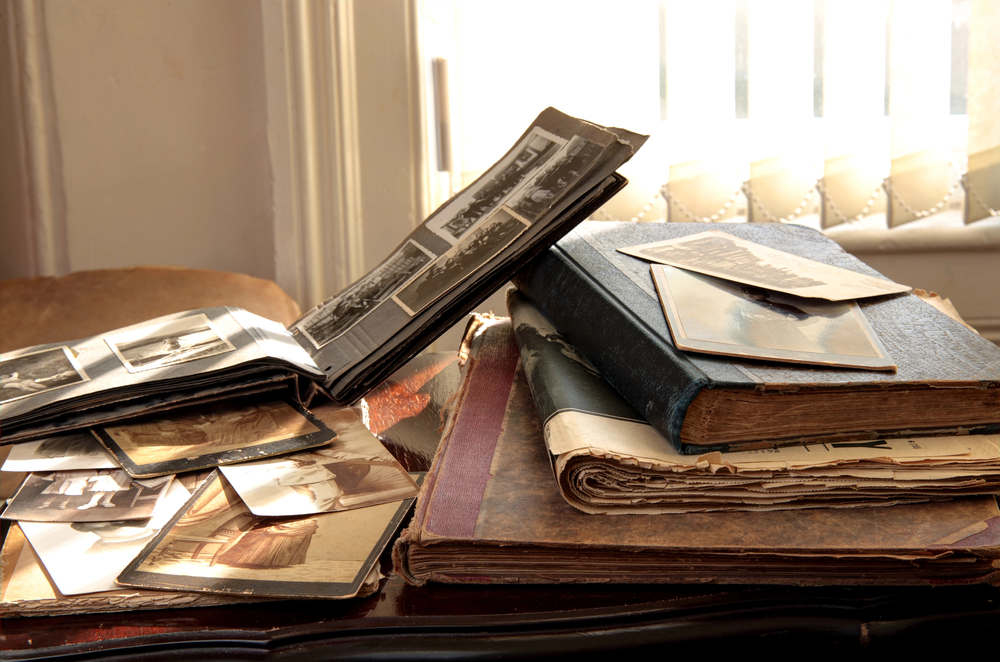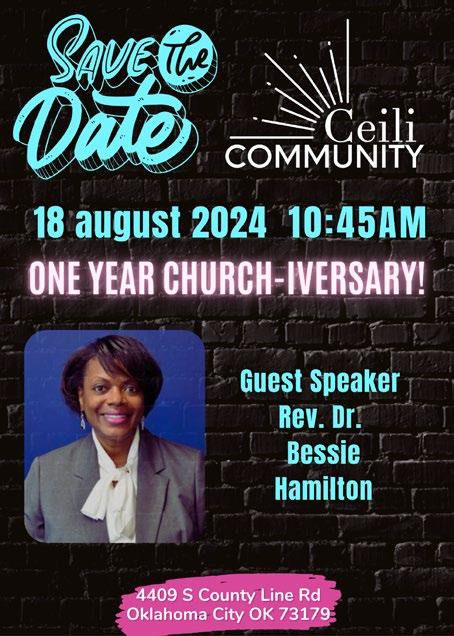
5 minute read
Archives & History: Helping preserve your church’s history
from The Contact 7-3-24
by okumc
We had a conversation with Conference Archivist Christina Wolf, to find out what churches should do with old files, papers, and cool things they have on hand.
Q: What should churches do with interesting historic finds? I’m specifically thinking of historic items that aren’t official records, but those cool, interesting things found in the back of a cabinet. A few years ago, I found 1950s hand-written committee meeting minutes that gave the names of the women as Mrs. Husband Lastname, and told which foods they brought. It was all done in pencil. There’s no legal reason to keep those, but it’s the most interesting stuff in the building.
A: Those older minutes are very interesting and represent a snapshot of not just the local church but of contemporaneous societal norms. Indeed, committee minutes are official records and considered archival and should be kept in the local church archives. Minutes often document the people, decisions, and events that make up the ministry of the church.
Q: If a church finds old and interesting treasures, are they something you would want to take in?
A: Not necessarily. Items like that should be kept in the local church archives if the membership deems the item to be of historical significance or if the item falls within the guidelines for archival purposes. We do occasionally take in some vital records from an active local church if there are space or preservation concerns.
There are guidelines for the local church on what they should be saving in their local church archives. I have retention schedules that I can share with individual churches (I’m working on updating these - the guidelines are posted on the okumc website at Archives and History Tools (okumc. org).
Q: Are there specifications for what people might be able to submit to A&H?
A: From the active local church, we would like copies of published church histories (these can be a few pages to a commercially published book). Sometimes a local church will find materials that may not pertain to their local church but have some Conference-wide significance. If in doubt, the local church can contact me.
Q: What do people typically reach out to A&H for? Do people do research using your archives? What are the most interesting things you have there?
A: The Archives and Special Collections at Oklahoma City University includes the University Archives, the Oklahoma United Methodist Church Archives, and Special Collections. The Oklahoma Annual Conference archives are one piece (a very large one!) within the Oklahoma United Methodist Church Archives.
We are the repository for the Oklahoma Indian Missionary Conference as well. Our records include predecessor conferences and denominations going back to the mid-1800s. Researchers can find information about the Methodist Episcopal Church (pre-1844); the Methodist Episcopal Church (North); the Methodist Episcopal Church, South; the Evangelical Association; the United Brethren in Christ; the Evangelical United Brethren; The Methodist Church; and The United Methodist Church. We also have journals, church records, Conference board, committee, and district records for those conferences that include Oklahoma within those denominations.
We do get calls from people needing baptism and membership records, statistical information, genealogical requests, graduate students researching aspects of religion and Methodism, and photographs of ministers (we have very few, so if a local church has portraits of ministers that have served, we would love copies!). The bulk of our records come from the District Offices and Ministry Center and include charge conference reports, committee and board minutes, closed church records, and the like. We routinely archive the Contact and Say So magazine (digital and print editions).
People are welcome to come to the Archives Reading Room (fifth floor of the Dulaney-Browne Library in room 508) to conduct research. We have had professional historians, graduate and undergraduate students (both OCU and other institutions), individuals researching their genealogy, group members getting ready for an anniversary (for instance United Methodist Women have done some research in the archives). Church historians and local church archivists and history committees have also reached out for advice on what to keep in their archives and how to write a church history or how to plan for a celebration/anniversary.
Q: Can I come visit the archives?
A: Please do! You can make an appointment with me here.
Advice for taking pictures of pictures
If you have old photos you’d like to get copies of, we have some advice.
Use the best quality camera available. This can definitely include a smartphone! Smartphones have excellent cameras these days.
Remove the photo from any glass or protective covering. Those surfaces are reflective and will not photograph well. Ensure there is plenty of light, but make sure it’s not harsh. If photos are glossy, they could reflect light.
Photograph at an angle. Though this is not always necessary, taking a picture from a bit to the side can help reduce reflections on the photo.
If your church has a wall, album, or other display of previous clergy, Archives and History would like copies! Reach out to Archivist Christina Wolf at cwolf@okcu.edu for more information.





